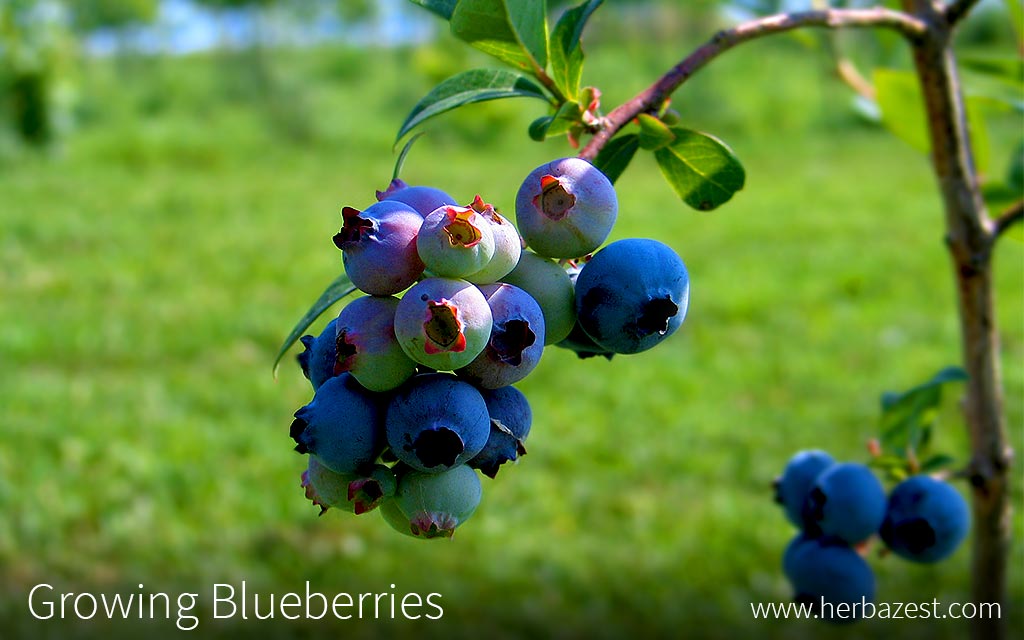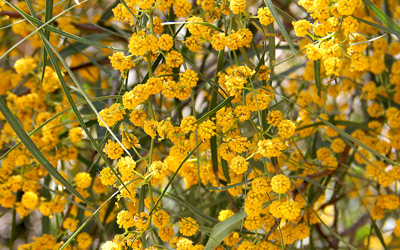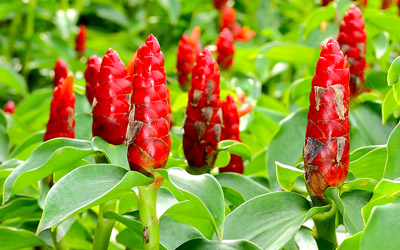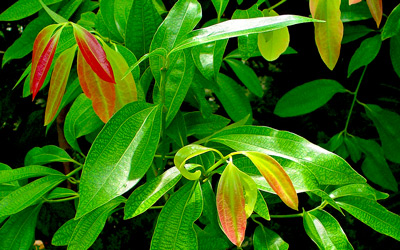The United States continues to be the largest producer of blueberries. Just some of the factors that influence their growth patterns are temperature, soil quality, plant spread, and type of care given, from weed control to pruning. The following growing guidelines will help you to successfully cultivate blueberries at small scale in your own garden.
1. Preparing the Soil
Blueberries thrive in loose, well-drained soil that is high in organic matter. Acidic soils are ideal for growing blueberries, and a pH level of 4.0 - 5.0 is recommended. In order to best maintain an appropriate level of acidity, some grow blueberries in beds or containers. They can also be grown in pots; however, planting them in the ground will allow a longer life and better yields.
A soil test is necessary several months before planting blueberry shrubs. Nutrient deficiencies may pose more problems than insects or disease, especially if the soil is not acidic enough. In home gardens the soil can be amended with elemental sulfur. Since the acidification process is slow, a treatment of at least six months before planting is suggested. The soil pH should be tested again immediately before planting.
2. Planting
Planting Blueberries Outdoors
Blueberry shrubs should be planted in late April or early May. In order to fully ensure successful pollination and fruit set, it is advised to plant two or more cultivated varieties. For home gardeners, a good option is to buy seedlings from a local nursery or garden center.
For standard shrubs, space the blueberries at least three feet (1 m) apart from each other, with a spacing of 8 - 10 feet (2.5 - 3.0 m) between each row. All the roots should be covered; the uppermost roots should be covered with at least three to four inches (7.5 - 10 cm) of soil.
Planting Blueberries Indoors
Growing blueberries in containers can be tricky, but it is a viable option for those who do not have an appropriate soil pH. It is advised to grow a dwarf cultivar in a container with an acidic, soilless growing medium.
A commercial soilless mix typically has a pH of about 6.2 and is generally comprised of sphagnum peat moss, perlite, vermiculite, and small amounts of lime and fertilizer. One way to prepare a soilless growing medium at home is mixing peat moss with shredded pink bark. No matter the mixture, the shrub should be planted in a five-gallon container and moved to progressively larger containers as it grows.
Similar to garden soil blueberries, container blueberries should not be saturated, but kept moist; mulch can be used to conserve humidity. The containers can be buried in the ground before winter, in mid- to late October, in a site where the plants will be protected from high winds but still fully exposed to sunlight. When spring arrives, if the container has proper drainage holes, it can be left buried in the soil. Otherwise, it can be removed and cared for as before.
3. Plant Care
Watering
Extended periods of drought during the summer and lack of irrigation will adversely affect blueberries' growth rate. They require plenty of water and are very sensitive to moisture fluctuations in the soil. Hand-watering with a hose is possible, but it is more advantageous to use soaker hoses.
If the soil pH is high, it is best to avoid mulching in order not to alter the acidic environment around the blueberries.
In order to produce consistent yields for a healthy crop, it is recommended to pack mulch around the roots to a depth of four inches (10 cm). It should be replenished when necessary, and replaced at the rate of one inch (2.5 cm) per year. This will help keep in moisture, reduce soil temperature when it is hot outside, and control weed growth.
Over-watering the shrubs could lead to root rot due to oxygen not being able to reach the roots. Therefore, irrigate no more than once every two days. It is important to keep the soil moist, but not saturated.
Fertilizing
Blueberries should not be fertilized immediately after planting, as they are easily damaged by excessive nourishment. The recommended amounts of nutrients should be applied in the first, second, and subsequent years of growing. Early spring is the best time to apply fertilizers, before foliage is present. It should be spread evenly to avoid root injury.
Once the blueberries are established, the use of ammonium sulfate will help keep an adequate level of acidity.
Pruning
It is important to prune blueberry plants following planting in order to remove flower buds and any weak, damaged, or diseased growth. In the third to fifth years, thinning out the flower buds is necessary to control over-fruiting and to prevent canes from breaking.
Bushes must be pruned during the dormant season and, when they are mature, old canes have to be removed, and the tall, upper shoots should be cut back in order to force the shrubs to grow branches at the lower level. This also controls bush height.
Weed Control
If blueberry shrubs are mulched correctly, weeds should not be an issue. If occasionally appear, they can be hand-pulled or hoed. For plants that are not mulched, care should be taken not to hoe more than one inch (2.5 cm) deep every two weeks. Depending on growing preferences, spraying herbicides may help control weeds.
4. Pest & Disease Control
An assortment of insects and diseases pose a threat to blueberry bushes. Learning how to recognize common pests and diseases as well as the damage they cause eases the growing process.
Pests
Spotted wing drosophila and Japanese beetles are two of the more common pests that attack blueberries. Spotted wing drosophila looks like fruit flies and lay its eggs on ripening berries. The larvae then burrow through the berries, softening the fruit.
Japanese beetles, on the other hand, feed on the leaves between the veins until there is nothing but brown fiber left. Plants with beetle damage will be susceptible to winter injury.
Other common blueberry shrub pests include leaf rollers and forest tent caterpillars.
Good horticultural practices such as soil preparation, pruning, and cultivar selection are usually very effective in preventing pest infestations, and pesticide sprays are used only when these controls are not effective.
When using pesticides, care should be taken to choose products with the lowest possible impact on human health and other animals, particularly pollinators, like bees, which are actually beneficial.
Diseases
The formation and spread of canker is one of the most common types of blueberry diseases, and it appears as small discolorations on the stems. Dying parts of the plant should be pruned out and destroyed in order to reduce the risk of disease infection.
Other common blueberry shrub diseases include armillaria root rot and ringspot viruses.
Wildlife
Besides pests and diseases, birds can pose a large threat to small plantings. They can be deterred by draping plastic or cloth netting over the bushes, as well as by using a framework while the blueberries are ripening.
5. Harvest
Depending on the variety, mature blueberry plants produce around 10 pounds (4.5 kg) of berries each year.
It takes 8 - 10 years for bushes to reach mature size, but they will begin to bear fruit after two to three years. Better yields will begin after five years. Harvesting of blueberry bushes by handpicking the fruits usually happens from late July to mid-August.
Blueberries should be picked in the morning, right after the dew has evaporated. This will make them less susceptible to post-harvest breakdown.
For highbush blueberries, pick the crop every five to seven days depending on temperature. For rabbiteye varieties, every 10 days will be sufficient.
6. Storage
Blueberries will last for up to two weeks after being harvested. However, this is not recommended, as off-flavors are often absorbed. In order to best store them, the water loss should be reduced by using cellophane covers.
Other methods of preserving blueberries include drying, freezing the fruits (whole or juiced), and making jam.
With just enough time and dedication spent caring for them, cultivating blueberries at home can be a rewarding pleasure.





